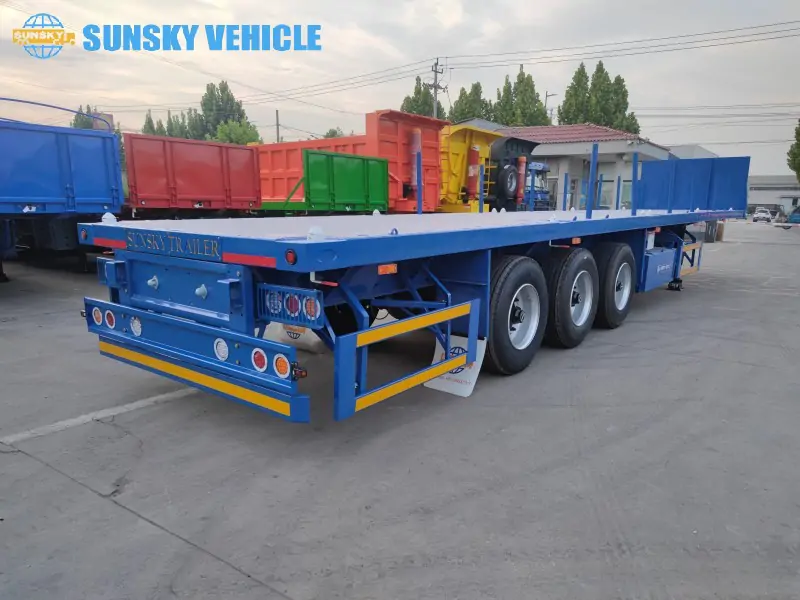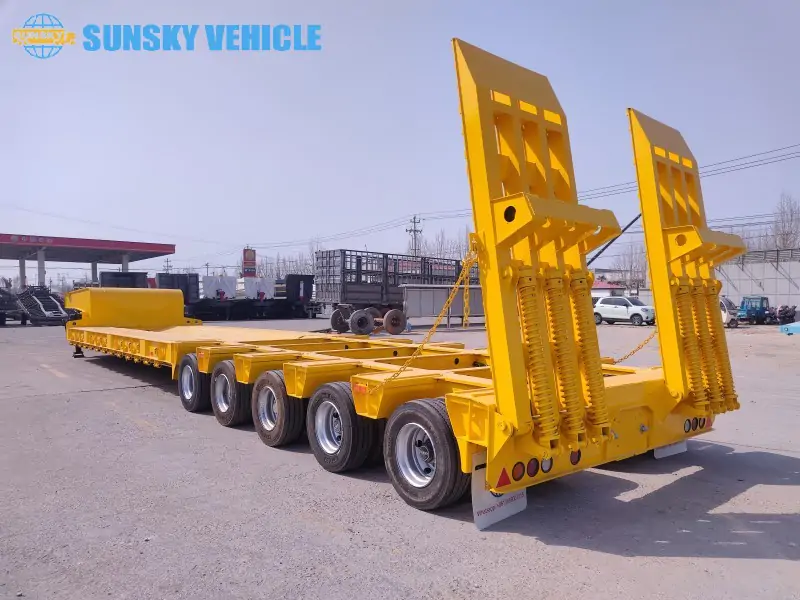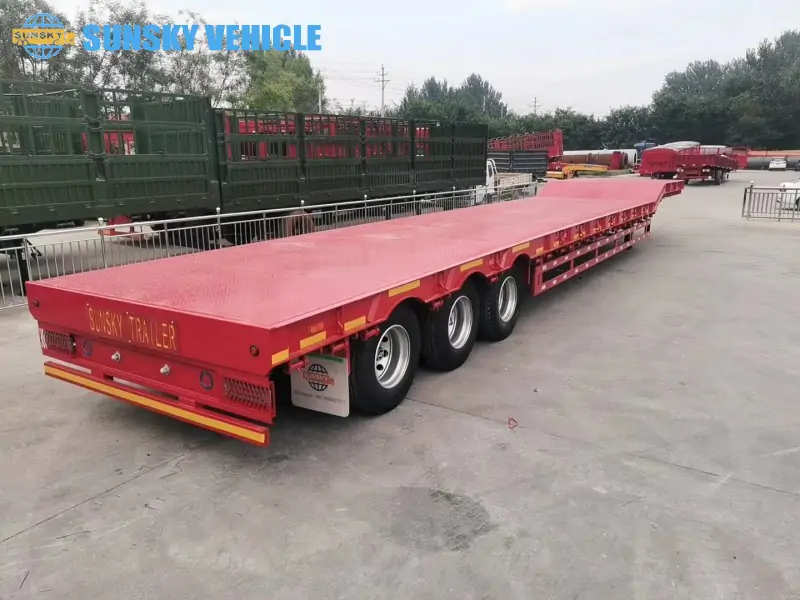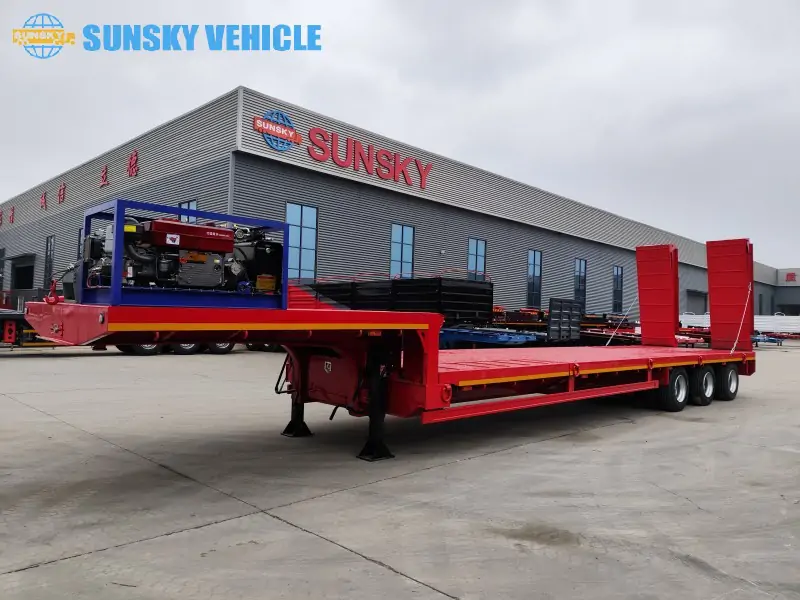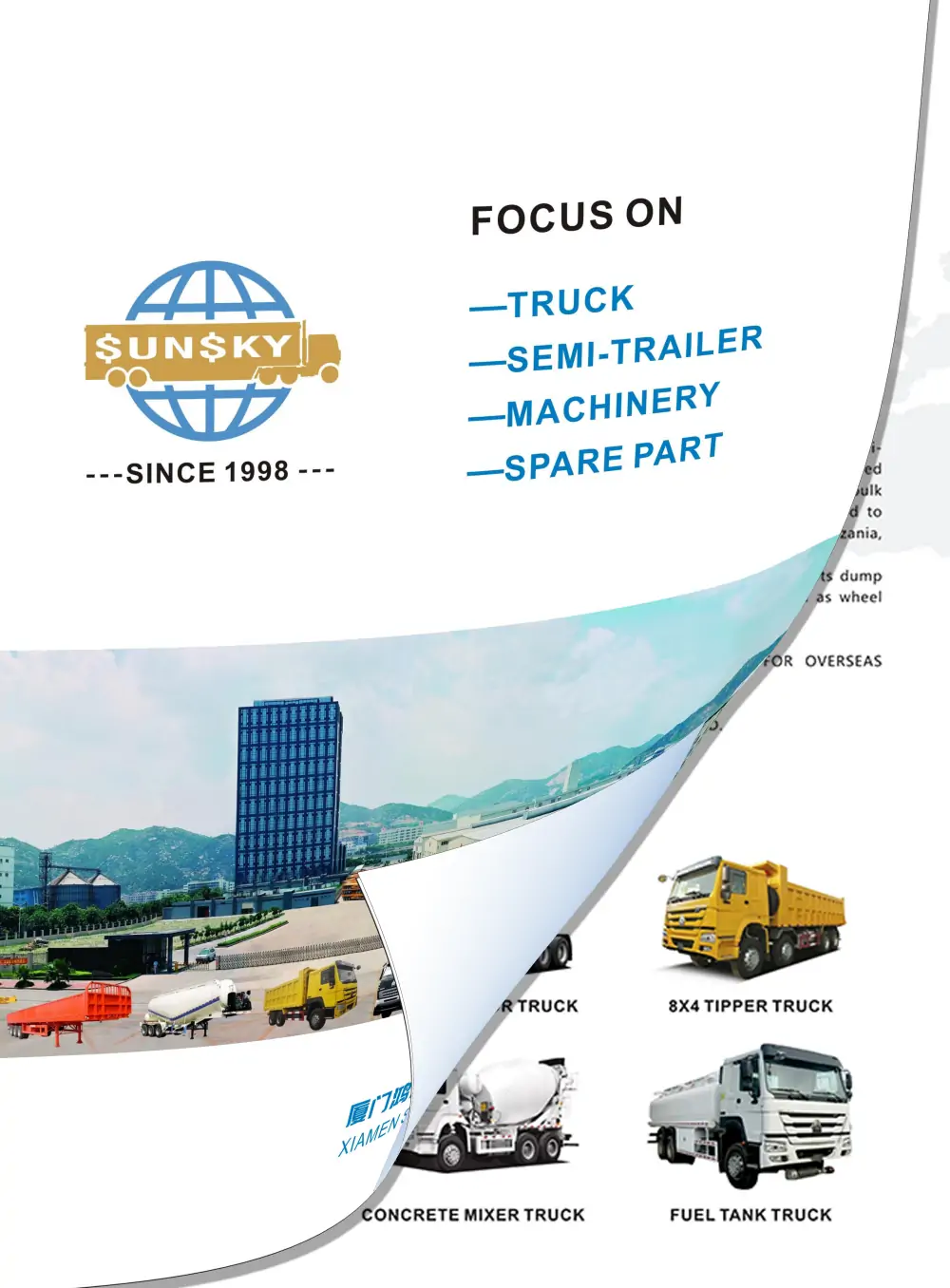Introduction
In modern logistics and heavy-duty transportation, not all cargo fits a one-size-fits-all trailer. From construction machinery and agricultural equipment to containers and industrial materials, different loads require trailers with very different designs and capabilities. That’s why the transport industry uses multiple trailer types—each built to solve specific height, weight, and safety challenges.
One of the most common comparisons buyers and fleet operators face is: What is the difference between a high bed trailer and a low bed trailer? At first glance, both are flat-platform trailers used for hauling cargo. But their deck height, load capacity, regulations, and application scenarios are very different—and choosing the wrong one can lead to safety risks, extra costs, or transport delays.
This article will give you a full, practical comparison between high bed trailers and low bed trailers, including:
- Structural and dimensional differences
- Load capacity and specification comparison
- Best-fit use cases and industries
- Advantages and limitations of each
- How to pick the right trailer based on budget, cargo type, and regulations
Definitions: What Are High Bed and Low Bed Trailers?
What Is a High Bed Trailer?
A high bed trailer, often known as a standard flatbed trailer, features a platform positioned higher above the axles—typically 1.3 to 1.6 meters (or 4.2 to 5.2 ft) from the ground. It is widely used for:
- Palletized goods
- Containers
- Construction materials
- Agricultural products
- General cargo that does not exceed height limits
Because the deck is higher, it offers good ground clearance and is suitable for paved roads, ports, and logistics hubs. However, its height limits the transport of oversized equipment or tall machinery that may exceed legal road height restrictions.
What Is a Low Bed Trailer?
A low bed trailer (also called a lowboy trailer or low-profile trailer) is designed with a much lower deck, usually 0.8 to 1.1 meters from the ground. This drop in height allows it to safely carry tall, heavy, or irregular machinery without breaching clearance limits.
It is commonly used to transport:
- Excavators, bulldozers, loaders
- Wind power equipment
- Mining machinery
- Industrial and military machines
- Oversized steel structures and prefabricated components
Terminology Clarification
- Low Bed Trailer – International/general term
- Lowboy Trailer—Widely used in North America
- Drop Deck / Low-Profile Trailer – Variants with slightly different structures
- Detachable Gooseneck (RGN)—A type of lowboy with removable front section for easy loading
All these terms describe trailers with lower platforms designed for heavy or tall cargo, while high-bed trailers refer to standard-height flatbeds used for general freight.
Key Structural & Specification Differences
1. Platform Height Comparison
- High Bed Trailer: Typically 48–60 inches (120–150 cm) above the ground
- Low Bed Trailer: Usually 18–24 inches (45–60 cm), designed for oversized machinery
2. Load Capacity & Axles
Low-bed trailers are engineered to carry heavier and irregular loads, while high-bed trailers are optimized for general cargo:
- High Bed Trailer: 2–3 axles, moderate load capacity (30–45 tons)
- Low Bed Trailer: 3–8+ axles, high load capacity (60–150+ tons)
3. Design Features & Structural Engineering
- Low bed: drop deck, stepped platform, detachable gooseneck, reinforced beams
- High bed: simple flat platform, cost-effective, multipurpose
4. Cost & Application Differences
- High bed: lower cost, general cargo, standard logistics
- Low bed: higher investment, oversized or heavy machinery
Robust and Durable, Achieve Exceptional Transport
Start your project today and get a high-performance semi-trailer solution tailored specifically to your unique needs.
Applications & Use-Case Differences
High Bed Trailer – Standard Logistics
- Containers, palletized goods, building materials, agricultural products, industrial components
Low Bed Trailer – Heavy & Oversized Loads
- Construction machinery: excavators, bulldozers, loaders
- Heavy equipment: transformers, generators, wind turbine parts
- Industrial and mining machinery, military vehicles, steel structures
Scenario Comparison
| Use Case | High Bed Trailer | Low Bed Trailer |
|---|---|---|
| Shipping 40ft Containers | ✅ Yes | ❌ Not ideal |
| Transporting Excavators | ❌ Too tall | ✅ Perfect fit |
| Moving Steel Coils or Lumber | ✅ Suitable | ✅ Possible but unnecessary |
| Delivering Transformers | ❌ Height exceeds limits | ✅ Meets clearance laws |
| Long-distance general cargo | ✅ Best choice | ❌ Excess cost |
| Passing tunnels/bridges with low clearance | ❌ Risk of violation | ✅ Safe and compliant |
Advantages and Limitations of Each Type
High Bed Trailer
Advantages: Versatile, cost-effective, easy to operate, compatible with standard freight
Limitations: Height restricted, cannot carry oversized machinery, moderate load capacity
Low Bed Trailer
Advantages: Suitable for tall/heavy loads, lower deck height, enhanced stability, high load capacity
Limitations: Higher cost, complex structure, may require special permits
| Feature | High Bed Trailer | Low Bed Trailer |
|---|---|---|
| Deck Height | 48–60 in | 18–24 in |
| Cargo Type | General freight | Oversized machinery |
| Load Capacity | Moderate | Heavy-duty |
| Cost | Lower | Higher |
| Regulations | Standard permits | Often special permits |
| Stability | Standard | Excellent for tall/heavy cargo |
| Structure Complexity | Simple | Reinforced, detachable parts |
| Loading Accessibility | Forklifts, cranes | Ramps, detachable gooseneck |
How to Choose Between High Bed and Low Bed Trailers
- Consider cargo height, weight, and dimensions
- Check route restrictions (bridges, tunnels, overhead clearance)
- Factor in budget, operational cost, and maintenance needs
- High bed for general freight, low bed for heavy/oversized equipment
Maintenance & Operational Considerations
- High bed: routine deck, frame, axle inspection, tire and brake checks
- Low bed: monitor hinges, ramps, hydraulic systems, reinforced beams, suspension, and axle wear
- Driver training on turning radius, load balance, and height restrictions
- Proper loading/unloading procedures and cargo securing
- Check road clearance and follow safety regulations
Frequently Asked Questions (FAQ)
1. What height differences exist between high bed and low bed trailers?
High bed: 48–60 in., Low bed: 18–24 in
2. Can any trailer be converted from high bed to low bed?
No. Low bed trailers require reinforced structure, extra axles, and a detachable gooseneck for safety.
3. Do low bed trailers cost significantly more?
Yes, due to complex design, reinforced chassis, and higher axle count.
4. Are special permits required for low bed trailers?
Often yes, depending on load size and weight.
5. Is a high bed trailer sufficient for oversized loads?
No, high bed trailers cannot safely transport tall or heavy machinery beyond standard height limits.
Conclusion
High bed trailers are versatile and cost-effective for general freight, while low bed trailers are essential for oversized, tall, and heavy machinery. Choosing the right trailer depends on cargo type, route restrictions, budget, and operational needs.

